Apart from their direct application, churches at all times have been magnificent architectural works that bring inspiration and awe to people who step in. Even when they are no longer used as religious places, it is a challenging task to preserve them for future generations. The respectful transformations bordering on renovations offer a new life to magnificent buildings of the past instead of tearing them down.
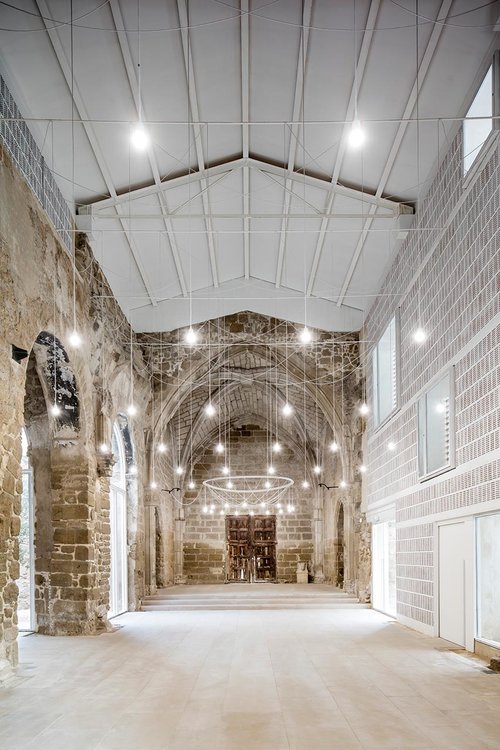
The Barcelona-based architecture and landscape studio AleaOlea was challenged to transform the ancient building of the 13th century Gothic church of Vilanova de la Barca into a multi-purpose hall retaining its original exterior appearance. The old basilica had been partially demolished as a result of bombing during the Spanish civil war, its ashlar masonry largely damaged afterwards by weather conditions as well as affected by the construction of a private house in its former graveyard.
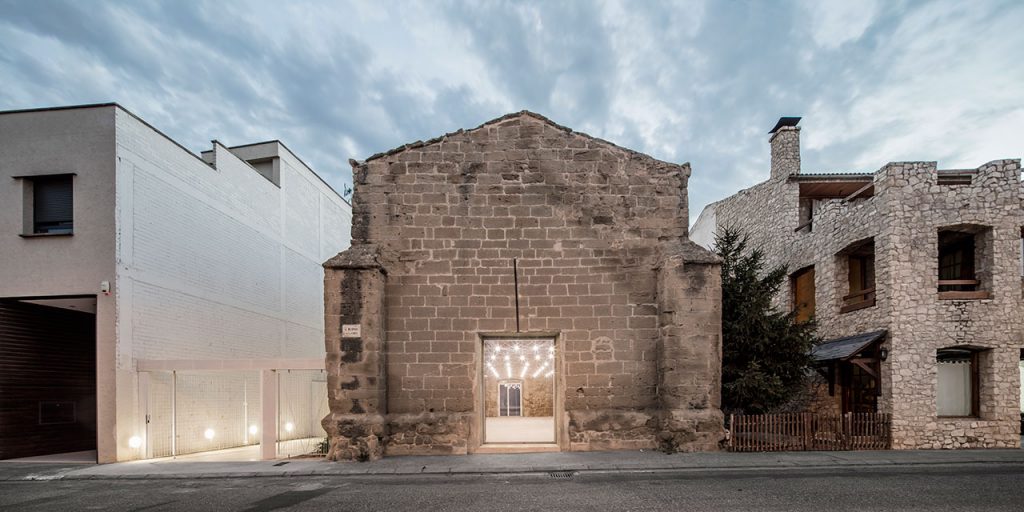
Church of Vilanova de la Barca transformed into a multi-purpose hall by AleaOlea
To establish a dialogue between the past and the present, AleaOlea established a latticework brick façade and a gabled tiled roof that were conceived as a ceramic shell to be supported over the remains of the ancient church. The image of the building is retained from the exterior that reproduces the irregular texture of the stone ashlar, while the perforated brick of the inner façade reinforces the contrast between the old and the new.
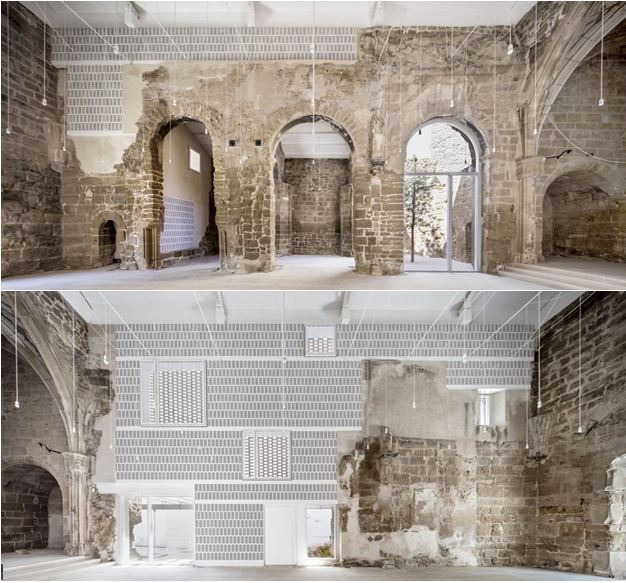
Church of Vilanova de la Barca transformed into a multi-purpose hall by AleaOlea
When faced with a task to accommodate a permanent theatre in the tiny San Rocco church in a small town of Rotello, the Italian architects duo Luigi Valent and Mauro di Bona have chosen a slightly different way focusing both on the rediscovery and the simplification of its ancient signs. Though the exterior image of the building is retained almost intact, upon entering visitors find a totally new space.

San Rocco church in Rotello transformed into a theatre by Luigi Valent and Mauro di Bona; ph: Stefano Pedretti
With its white-washed walls, ceiling and floors and a series of contrasting black armchairs that can accommodate up to 100 visitors, the contemporary interior creates a bright, airy atmosphere. The architects showed their respect to the original architectural shell by retaining certain historic features – such as a portion of the existing stone floor establishing a successful connection to the past.

San Rocco church in Rotello transformed into a theatre by Luigi Valent and Mauro di Bona; ph: Stefano Pedretti
The Antwerpen-based studio Van Staeyen Interior Architects went a bit further and reimagined the Gothic style in the design of a bar located in the Chapel of St. John in the Cathedral of Our Lady, the largest Gothic church in Belgium. The small place is aimed to be a gathering place for churchgoers and tourists alike.
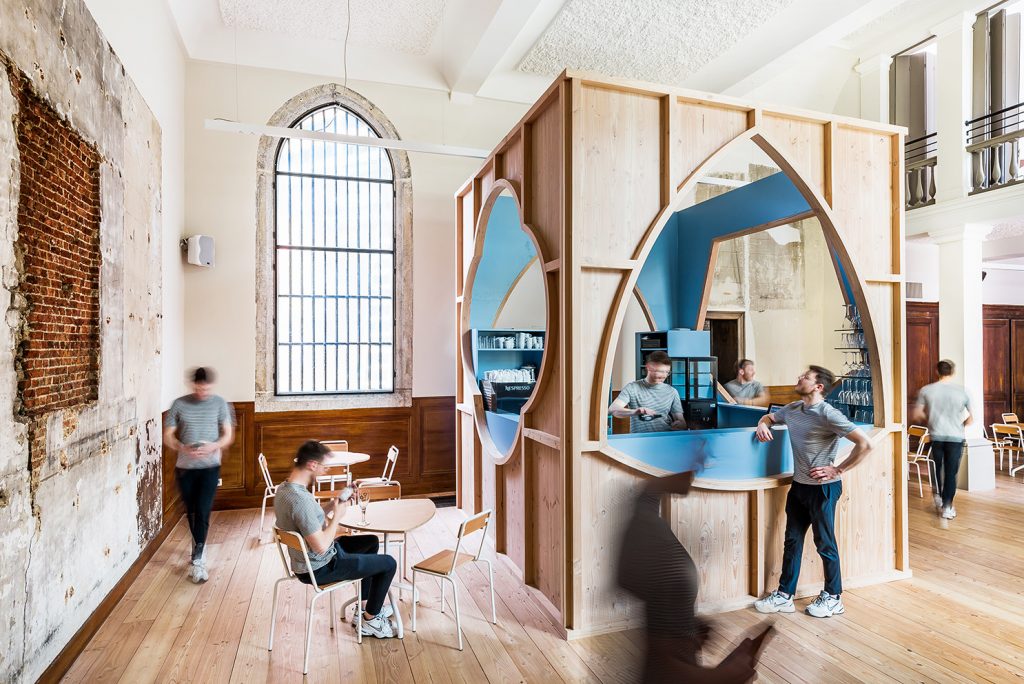
Bar in the Cathedral of Our Lady by Van Staeyen Interior Architects
The architects allude to the main building in every detail of the interior design. The architectural elements of the cathedral such as vaulted ceilings, buttresses and arches have found their way in the shapes of the carpentry structure: the serving apertures of the bar are whimsically shaped as recognizable Gothic forms of a pointed arch, a four-leaf clover, and a pentagon. The interior surface of the bar is painted a vibrant blue that is inspired by the tones of the stained glass windows, while the chosen material – French Douglas fir – is the one used for the original flooring of chapel. All this lets Van Stayen to establish a connection between the magnificent old building and the contemporary reception point.
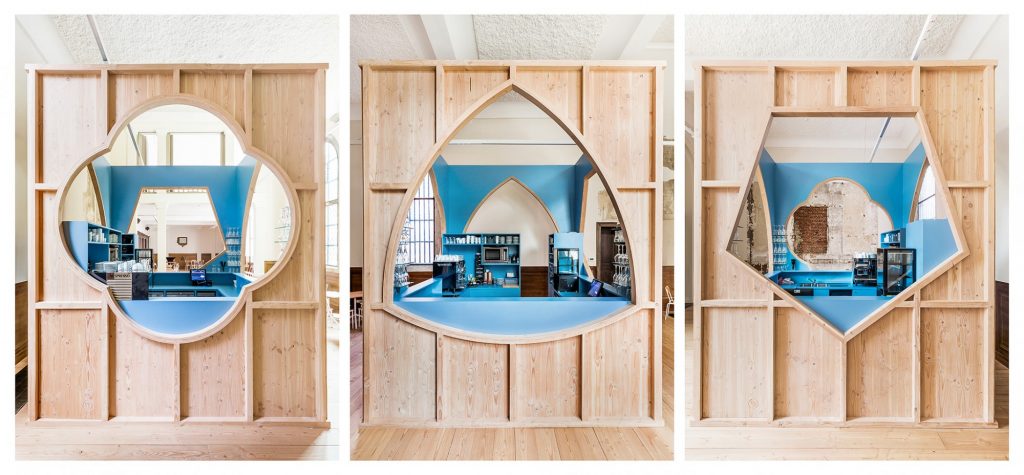
Bar in the Cathedral of Our Lady by Van Staeyen Interior Architects